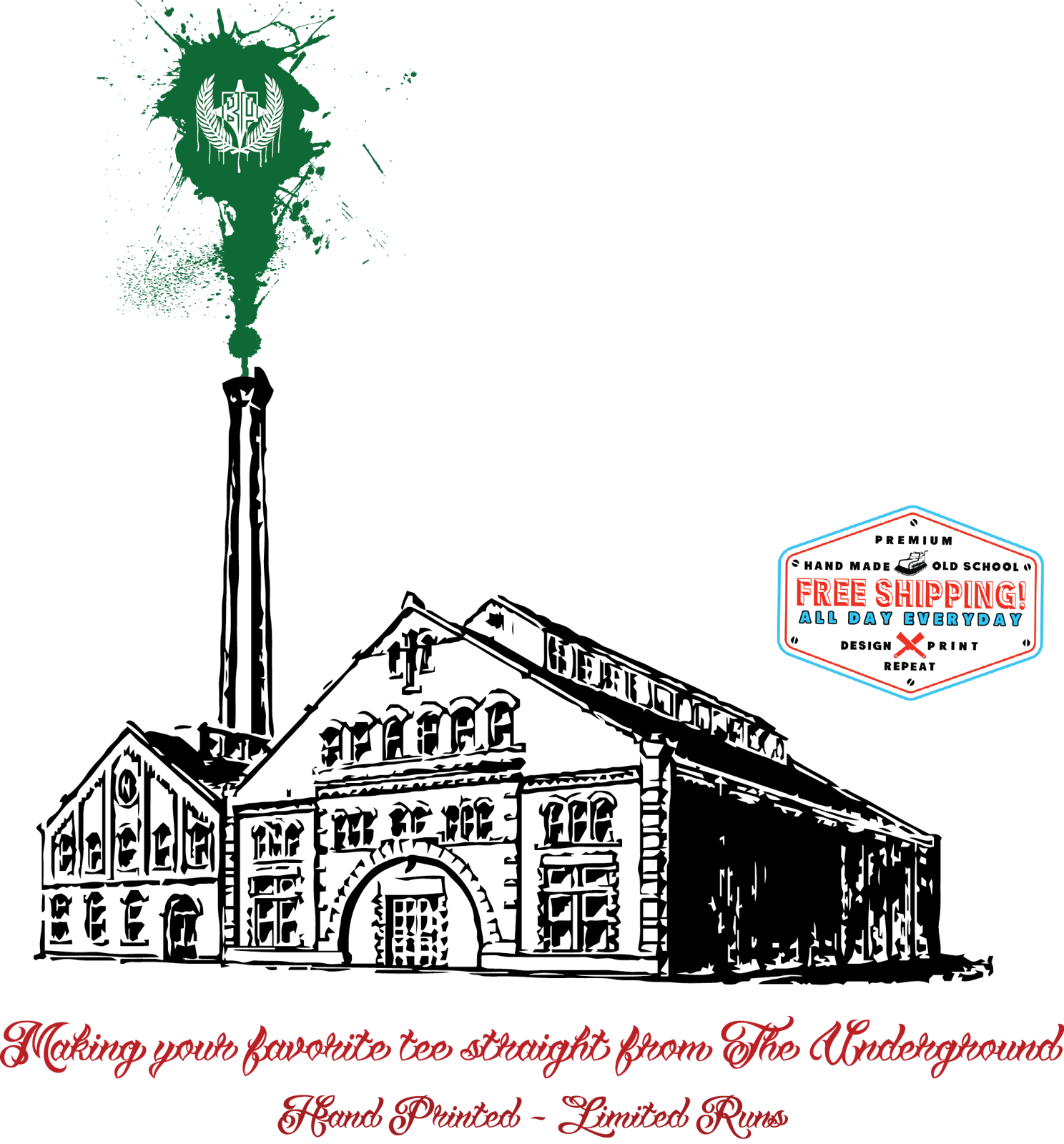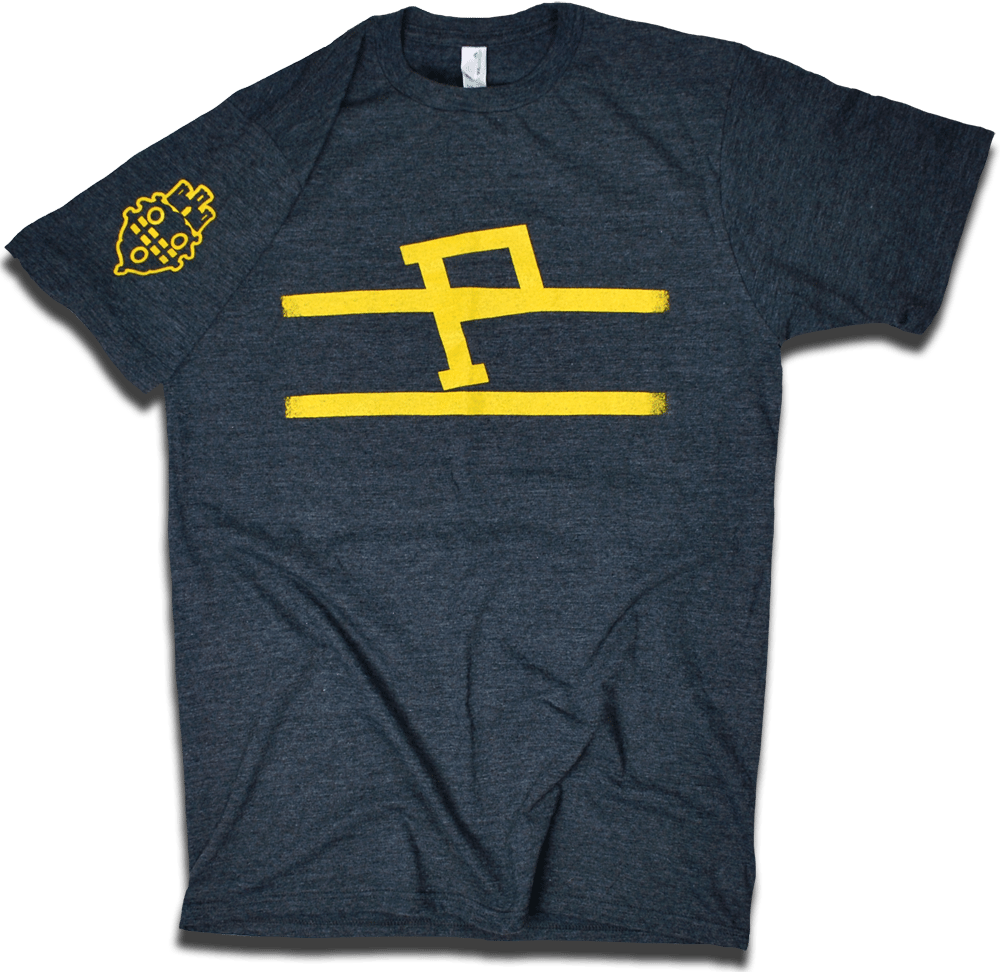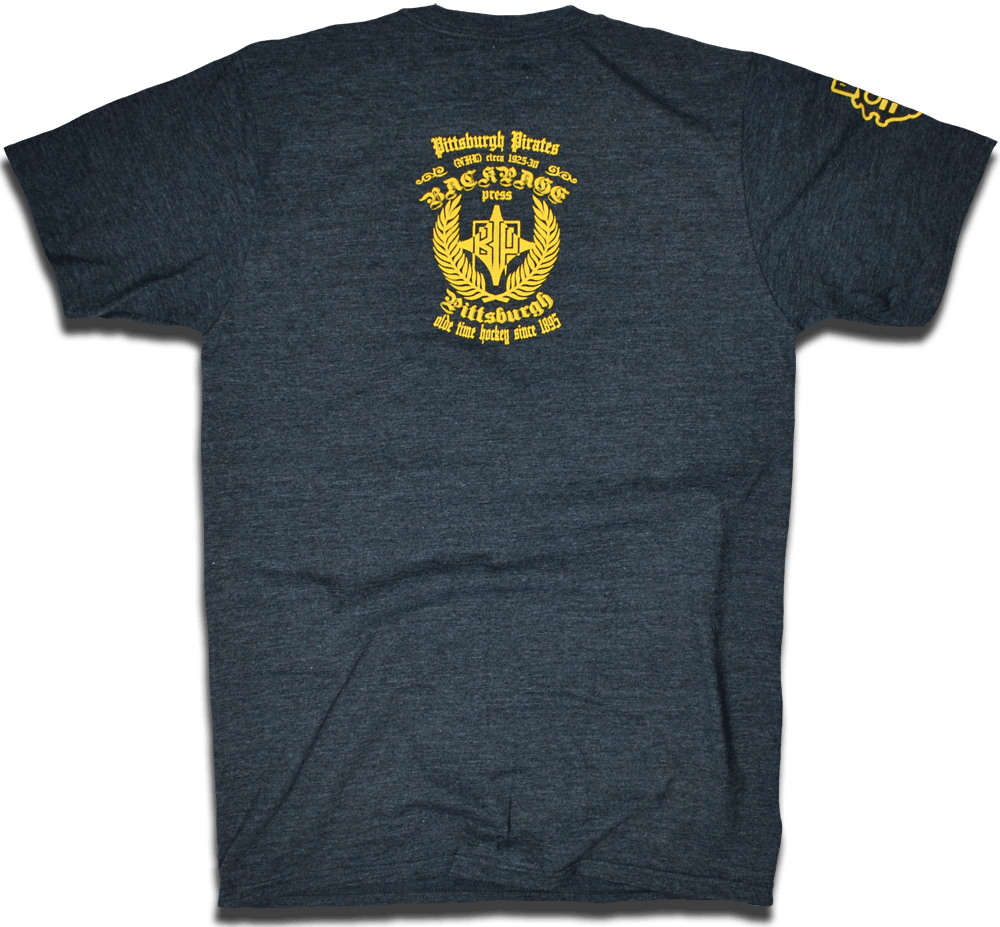Pittsburgh Pirates 1925 NHL custom hockey tee
$25.00
Pittsburgh has been in the American hockey forefront way before the Penguins moved into the Civic Arena in 1967. We had the Pittsburgh Athletic Club, the Yellow Jackets, the Pirates, the Shamrocks, the Hornets, and then the Penguins. Pittsburgh hockey can be dated as far back as 1895. Take that Canada.
These shirts were made in celebration of Pittsburgh hockey and it’s illustrious, and often overlooked, history. An incredible amount of effort was put into recreating each design from hand, using vintage team photos as references. The prints are done meticulously; as to not disappoint passionate, detail obsessed fans, nor myself, often the worst critic.
This Pirates tee is made to replicate the 1925-26 jerseys. I decided not the keep the Pirates script logo that appears on top of the original wool jerseys, and went with only the simpler “striped P” logo for this tee, just for aesthetic purposes. The front print was recreated on Photoshop to aid in keeping the straight lines and edges. It should be noted that this front print is not the same as the square logo that you will find on image searches for the NHL Pirates. The square logo has different intersecting lines than the original Pirates NHL jerseys, and the "P" is not slightly slanted. The front print on this tee replicates the original Pirate’s jerseys. On the right sleeve, a version of the Pittsbugh city crest was recreated from pictures of the original Pirates jerseys.
The gold it was specially mixed to replicate the team colors at that time, and to contrast best with the style of tee picked for this design.
A brief history of the NHL Pittsburgh Pirates:
The Pittsburgh Pirates played their first NHL game on December 2, 1925 in which fans paid $1.00 to see them lose to the New York Americans at The Gardens. The Pirates where the 3rd American franchise in the NHL, and the 7th team overall, coming into the league in 1925, and ceasing operations in 1930. Obviously, the nickname comes from the successful baseball team that had been around for over 25 years at that time. The NHL Pirates are actually the Pittsburgh Yellow Jackets that were renamed the Pirates after changing ownership in 1925. The new owner, James F. Callahan cashed in a favor from then MLB Pirates owner Barney Dreyfuss to have the right to name his hockey franchise identical to the local ball team. Unfortuantly, Pittsburghers missed having all 3 pro teams named the Pirates by 3 years since the NHL Pirates folded in ’30, and the NFL Pirates (Steelers) where formed in ’33.
An equally interesting fact in Pittsburgh hockey history is that the NHL Pirates where the 1st team to don the black and gold colors in the city, basing the scheme around the Flag of Pittsburgh. In a 1925 Pittsburgh newspaper article, the writer refers to the Pirates as "the Black and Gold". The MLB Pirates wore the popular color scheme of the time, which was red, white, and blue. The black and gold uniformed Steelers would come into the league 3 years after the hockey Pirates folded in ’30. The National League Pirates were actually the 3rd and final team to wear black and gold, changing in ’48.
In one of my favorite black and gold facts, the Penguins actually used the long defunct NHL Pirates as an example of a team other than the Boston Bruins to wear the black and gold, after the B’s petitioned the league over Pittsburgh’s jersey color change in 1980. The Pen’s were struggling, and were in danger of losing the franchise when they decided to change the two-tone blue jerseys to black and gold to match the dual-champion ’79 Steelers and MLB Pirates. Creating some sort of alliance with championship teams would hopefully drum up fan support. The NHL allowed the Penguins to change their colors as a result of the Pirates using these colors 50 years prior while playing in the same league as the Bruins. As a result, our fair city is the only one in America to dress all of their major sports teams in the same color scheme.
Note: It turns out that colors don’t make a team successful, but Mario Lemieux does.
The Pirates joined the NHL and were assigned to, what would later be called, the NHL's American Division with the Boston Bruins and the New York Americans. The Duquesne Gardens, located in Oakland, served as the team's home arena. The Pirates, dubbed the "Mighty Steel City Sextet" in the Pittsburgh Press, were mostly leftovers from the former Pittsburgh Yellow Jackets. Ten former Yellow Jacket players would play for the Pirates.
For reasons I can’t find exact reasoning behind, the team switched to black and orange uniforms for their fifth and what would be their final season. Baffling and appalling to Pittsburghers, this will answer and age old hockey question…why do the Philly Flyers play with black and orange uniforms? This fact came to be because in five seasons, the Pirates were above .500 and made the playoffs only twice. So, on October 18, 1930 at the NHL Governors meeting, Pirates owner Benny Leonard moved the team to the other side of Pennsylvania and renamed them the Philadelphia Quakers. Leonard's ultimate intention was to return the team to Pittsburgh as soon as a new arena was built. Thirteen players from the Pirates were transferred to the Philadelphia Quakers after Pittsburgh franchise relocated.
The Quakers had a wretched season in 1930–31. The team then received permission from the NHL on September 26, 1931 to temporally cease operations as they sought a permanent arena in either Pittsburgh or Philadelphia.
Meanwhile The Great Depression would devastate the NHL as 4 teams were forced to fold, leaving behind just six teams. When a new Pittsburgh arena failed to materialize, Leonard surrendered his franchise in 1936. As it turned out, a new arena in Pittsburgh wouldn't be built until the Pittsburgh Civic Arena opened in 1961. The NHL would play with six teams for 25 years before deciding to expand. The expansion in 1967 brought the Pittsburgh Penguins to the NHL and the city of Pittsburgh and the orange and black uniformed Philadelphia Flyers to Philadelphia.
Availability
-
SMALL
-
MEDIUM
-
LARGE
-
XL
-
2XL



